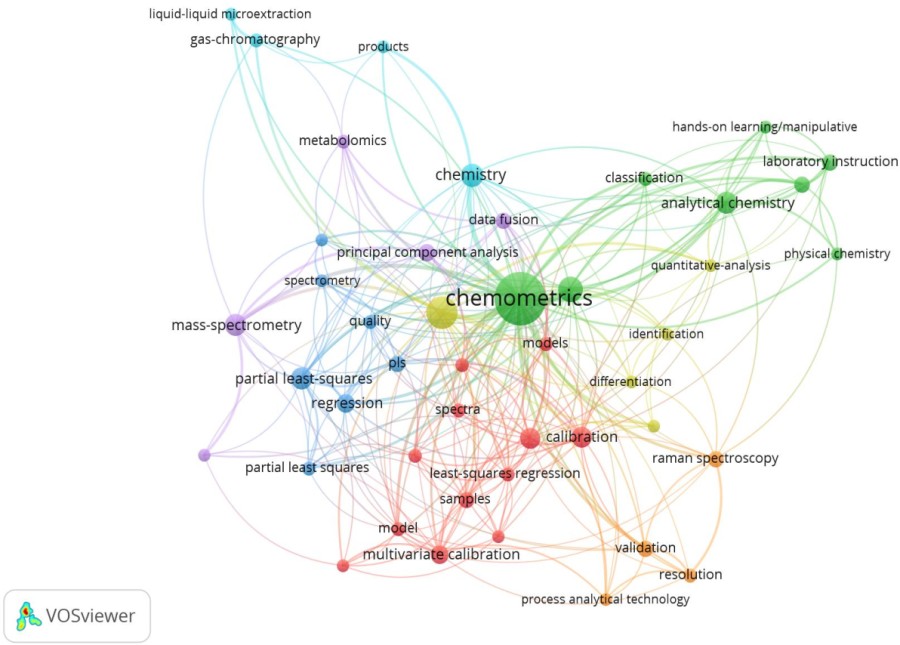Chemometrics in Spectral Data Analysis
Chemometrics
The science of employing data-driven techniques for collecting information from chemical systems is known as chemometrics. It is an interdisciplinary field that studies chemical data using computer science, statistics, and mathematics. To gather information about chemical systems, chemists employ a range of methods, including mass spectrometry, chromatography, and spectroscopy. Without the help of chemometrics, these methods can produce huge volumes of complex data that can be difficult to understand.
Chemometrics can be used to solve a wide variety of problems in chemistry, including:
- Identifying and quantifying unknown compounds
- Classifying samples
- Developing calibration models
- Monitoring chemical processes
Chemometrics employs a wide range of approaches, which can be essentially divided into two groups: supervised and unstructured methodologies.
Unsupervised Methods
Unsupervised methods deal with data where there are no pre-defined classes or groupings. The goal here is to explore the data and identify inherent structures or patterns within it.
Principal Component Analysis (PCA): This is a popular technique for dimensionality reduction. It identifies the most significant patterns (principal components) in the data, allowing for visualization and compression of complex datasets.
Cluster Analysis (CA): This method groups data points with similar characteristics together, helping identify natural clusters within the data. It’s useful for classifying samples or exploring relationships between them.
Supervised Methods
Supervised methods influence data with pre-existing classifications to develop models for prediction or classification of future samples.
Partial Least Squares (PLS): This builds a predictive model by correlating the instrumental data (X-matrix) with the reference information (Y-matrix), like concentration values. It’s widely used for quantitative analysis.
Classification Methods: These techniques categorize samples into predefined classes based on a training dataset. Common examples include Linear Discriminant Analysis (LDA), Support Vector Machines (SVM), and K-Nearest Neighbors (KNN).
There are other additional chemometrics approaches available, thus this is certainly not an exhaustive list. Many advanced methods include of the following:
- Orthogonal Projections to Latent Structures (OPLS)
- Artificial Neural Networks (ANNs)
It is essential to keep in that selecting the correct method involves understanding the particular data, the type of spectra you are analyzing, and the study’s expected result.
Advantages of Chemometrics Analysis
- Handling complex data
- Improved accuracy and precision
- Reduced costs and time
- Increased information extraction
- Model building and prediction
- Enhanced specificity
- Process monitoring and control
Future of Chemometric Based Spectral Data Analysis
Deep learning methods and machine learning algorithms are expected to take the lead. This might result in the development of “smart” chemometric techniques that have the ability to suggest new analytical approaches or even select the most appropriate analysis method automatically for a given dataset.
Developing explainable AI models in chemometrics will probably be a major focus as AI integration becomes more complex. Creating trust and ensuring the reliability of chemometric analysis, especially for important applications, will rely largely on the transparency with which models arrive at their conclusions.
Emerging spectroscopic techniques: Chemometric analysis will have expanded opportunities as a result of the creation of new spectroscopic techniques with greater sensitivity and resolution. Chemometrics will have to change and grow to deal with the special data structures and complex connections that come with these cutting-edge methods.
Wider uses: Chemometrics is expected to be applied in novel and developing areas outside of traditional chemistry. It could be applied to environmental monitoring, improved material characterization, or even customized treatment using spectrum analysis of biological samples.
To sum up, there can be lots of promise in the investigation of chemometric spectrum data in the future. Chemometrics can be an effective instrument for unlocking insights hidden within spectral data, resulting in innovations and developments across many scientific and technical areas. This can be achieved by accepting these advancements and developing interdisciplinary collaboration.
Source:
- https://link.springer.com/book/10.1007/978-981-19-1625-0
- https://link.springer.com/article/10.1007/s00216-017-0517-1
- https://www.semanticscholar.org/paper/Chemometrics-in-analytical-chemistry-%E2%80%93-an-overview-Santos-Nascimento/5f4af72a73cff1710397dbe80c2ec600732e7df1

